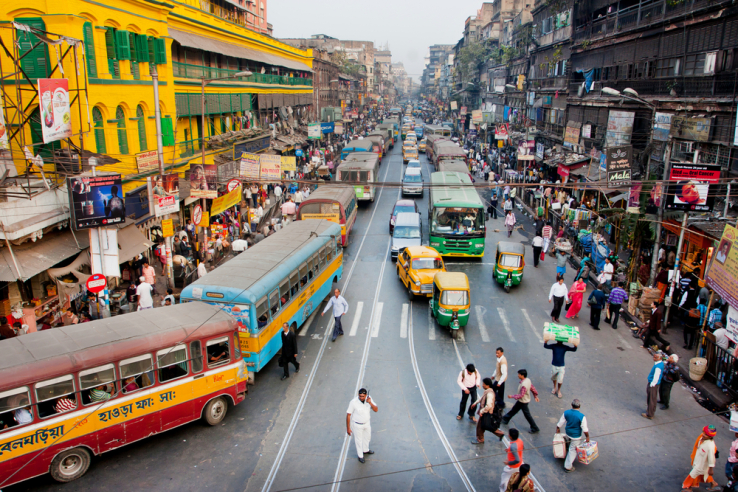
Indian ride-hailing app Ola acquires mobile payment startup Qarth to expand Ola Money
By Ingrid Lunden for Techcrunch.com
After launching a standalone app for Ola Money in November last year, Indian transportation app Ola has made an acquisition to double down on its mobile wallet and payments business: the company has acquired Qarth, a startup that has developed a mobile payments app called X-Pay.
Financial terms of the deal have not been disclosed. The is the third acquisition announced by Ola, and the first to build out an aspect of its business beyond basic transportation.
“With acquisitions like Qarth, we are investing in building seamless digital payment solutions,” Anand Subramanian, Senior Director, Marketing Communications at Ola, said in a statement. “As we work towards our mission of building mobility for a billion people, we will continue to build for a best in class payment experience for our users.”
Qarth’s X-Pay app (Android-only) integrates with some 26 banks in India, providing those who have accounts at these banks to use the app to make “one-touch” mobile payments or money transfers.
It has picked up some users but has not been a runaway hit: since going live in December 2014, X-Pay has had between 10,000 and 50,000 installs. As a point of comparison,PayTM’s payment and wallet app has had between 10 million and 50 million installs, whileOla Money has had between 100,000 and 500,000 installs on Google Play.
The X-Pay app is going to remain live for now, Ola tells me, but it sounds like its technology will also be integrated into Ola Money to build out the functionality that Ola can offer its users.
Uber’s rival in India is backed by the likes of Softbank, Sequoia, DST and China’s Didi Kuaidi, and it has raised just under $1.2 billion (most recently $500 million in November). Ola’s previous acquisitions were TaxiForSure to expand into low-cost rides; and GeoTagg to grow Ola’s logistics platform.
For its part, Qarth had been incubated in the IIT academic system and co-founders Abhinav Srivastava and Prerit Srivastava, along with the rest of their team, will be joining Ola Money.
The rise of Ola’s payments business is a unique development that may not have an obvious correlation for the likes of Uber and Ola’s network partner Lyft in the U.S. — not immediately, at least.
(While Lyft and Uber have created some payment infrastructure in their services, this has been mainly connected to making paying for rides and goods more frictionless for passengers, and drivers getting paid more quickly. It’s yet to be seen whether either company tries to leverage those payment relationships for other kinds of services.)
Ola Money was partly borne out of a regulatory need: because credit and debit cards are not that ubiquitous, those who operate transportation apps and want to accept card or non-cash payments provide passengers with a wallet service where users can keep a float to pay for their rides.
But quickly realising that the sums of money that people were keeping in their Ola Money wallet were bigger than what users were spending on rides alone, Ola expanded the service to cover more than simply rides on its own network.
Related Articles
Google Maps goes beyond Uber, adds Ola, Hailo and more car services to its appIndia’s Ola shutters its on-demand food and grocery ordering servicesUber and Ola launch motorbike taxi services in IndiaUber Begins To See The Payout From Accepting Cash Payments
Partnering with Zipcash to make payments — a relationship that will remain in place post-acquisition, Ola tells me — Ola expanded to let users make payments at retailers like Lenskart, budget hotel network OYO Rooms, music streaming service Saavn, hyperlocal marketplace Zopper, and more. It’s an opportunity that Ola is hoping to grow, which is partly why Ola has opted to bring on a team, and some already-built technology, and to forge deeper and more direct relationships with banks to build the service out further.In India, card payments are not as ubiquitous as they are in the West, and so cash payments are still a popular way for consumers to pay for rides. Uber, despite a late entry into cash acceptance in India, is fast expanding its own cash program. But from what we understand, Ola’s recently tipped over and now takes more transactions for rides via Ola Money than it does by cash.
And that is ultimately the way Ola wants things to go: cash is messy and more of a liability, while card and wallet payments give people a looser regard for how they are spending their money.
It also opens the door to Ola making commissions on transactions, even those that may have nothing at all to do with transportation. Ola’s essentially looking at how it can transform from a company that “helps you get from A to B” to a company that can more generally “helps you get things done.”
Having a payments service and control of a consumer wallet can potentially help with Ola’s margins on its burgeoning transporation empire, too. Margins are not something to be underestimated when launching new services: Ola recently shuttered its food delivery pilot, reportedly in part because of the costs of running the business coupled with a lack of user uptake.
FEATURED IMAGE: RADIOKAFKA/SHUTTERSTOCK





